Climbing Shoes
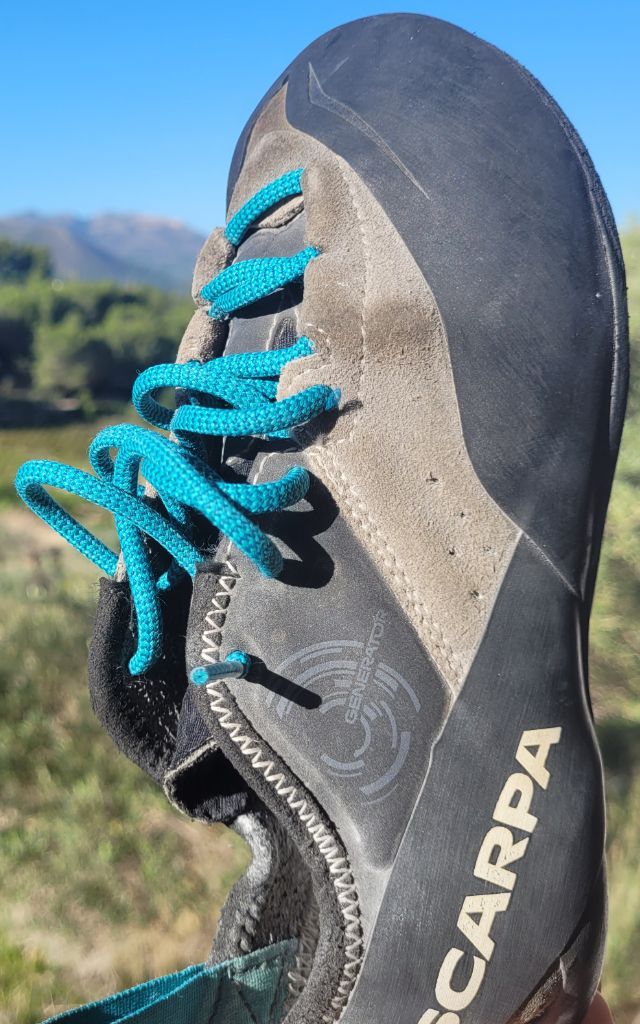
Climbing shoes need to be fit for purpose. As an outdoor climbing company, we work with climbers on their first outdoor climbing trip as well as with climbers who have been climbing for decades. Whether a beginner or a seasoned pro, we often experience that climbers don’t know much about their climbing shoes. And as a consequence are often not wearing the right shoe. The climbing shoes they come on an outdoor climbing trip with might be fine for indoor climbing, where footholds are relatively big and stick out from the wall. But the same climbing shoes don’t necessarily allow for standing on small edges, or using cracks.
In this blog we will give a quick guideline of what to look for when buying a good pair of Outdoor Climbing Shoes.
Stiff soles
First of all it is important that the soles are stiff. This can be checked by squeezing the toe box of the shoe sideways. Use both hands in this squeeze test.
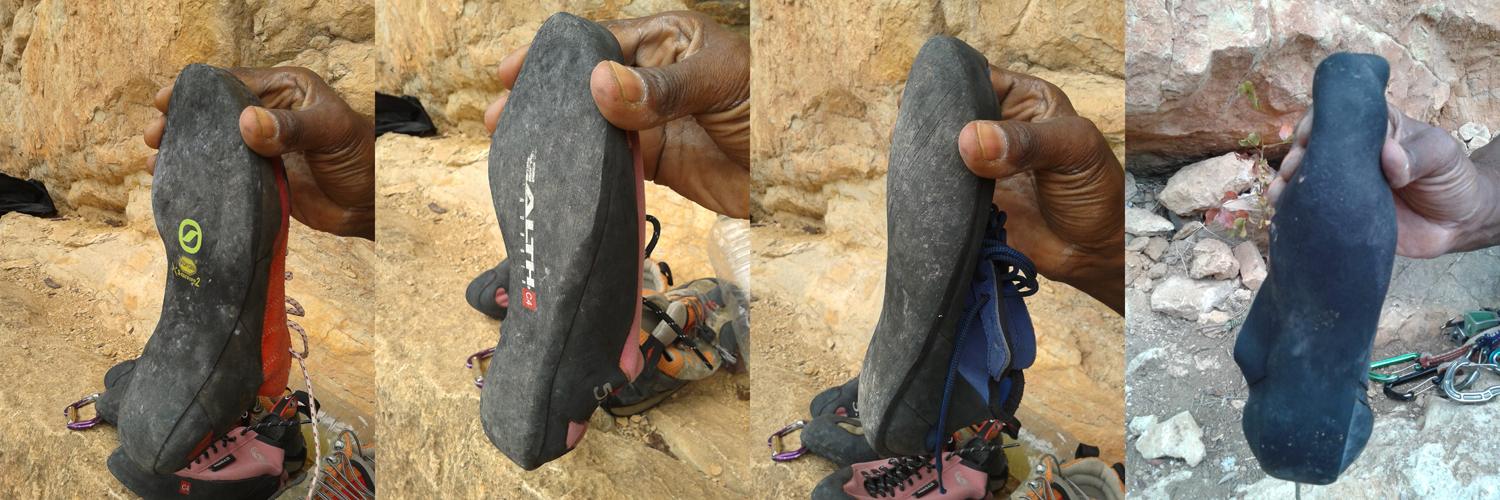
The stiffer the sole, the more support it gives the foot muscles when standing on small footholds. Wearing a shoe with a stiff sole allows the climber to place the toe area of the shoe on small edges without the foot rolling off the foothold – the toes being too weak to stand on the edge. A sloppy shoe will ‘roll off’ the foothold once it is weighted, unless the toe and foot muscles are strong enough to compensate for the softness of the shoe.
If you recognise the feeling of your toes ´getting pumped´ then that means your toes are having to work hard to compensate for the soft rubber and you need a stiffer pair of climbing shoes.
Besides the ‘squeeze test’, another guideline is the thickness of the sole. We recommend buying 4mm rubber. And when it is time to resole your shoes, replace them with 4mm or even 5mm. This has as another advantage that the shoe will last longer.
Another thing to take into account is the shape of the sole. For relative beginners, we recommend relatively flat soles, as opposed to the more arched shoes.
Toe box
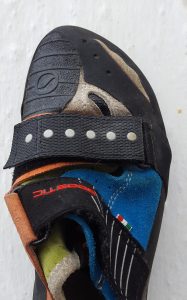
Then there’s the toe box. We recommend shoes with a rubber toe box. The rubber maintains its shape, whereas leather stretches over time, as a consequence of which there’ll be room for movement of the toes. When the toes move around in the shoe, this makes it harder to stand on smaller footholds, because the toes will ‘roll off’ the foothold. What you want is a shoe with your toes snugly tucked together.
Scarpa
In our opinion, which is shared by some of the best resole companies, Scarpa is the leading brand for climbing shoes at the moment. The shoes are well-designed with high quality materials and maintain their stiffness longer than other brands. In the shop, a shoe from another brand may also feel stiff, but these lose their stiffness after only a few months of use, whereas the Scarpa shoes, with their high-level plastic insole, remain their stiffness even after several times of resoling.
The best outdoor climbing shoe on the market at the moment (2024) is the Scarpa Generator. The Scarpa Generator comes in ´male´ and ´female´ lace-ups (for wider and narrower feet), in velcro, and in ´mids´ that are higher and provide ankle protection – especially useful when crack climbing. To see where Scarpa position their Generator model in relation to their other models, please check this Scarpa website. Click here for more information on the technical features of the Scarpa Generator, and other models.
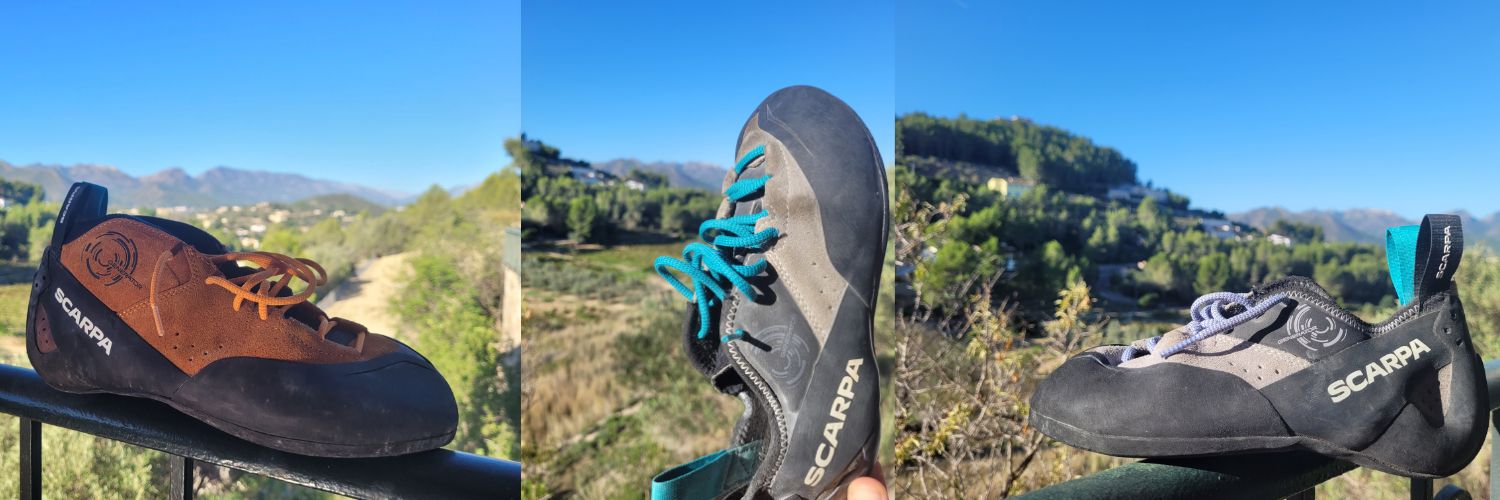
**Rock & Sun is not sponsored by Scarpa**
Other considerations
Heavy or light climber? It may be a taboo to ask about a climber´s weight, but it is relevant in the decision of what shoe to get. A heavier climber puts more weight through the foot. More weight makes the shoe bend more, and therefore the foot muscles have to work harder. A heavier climber would therefore benefit from a stiff shoe even more so than a lighter climber does. A lighter climber can get away with a less stiff shoe as the stiffness of the sole isn´t put under as much pressure.
Strong or weak feet? It takes years of regular climbing for your foot muscles to get strong. As a rule of thumb, if you have been climbing less than 5 years, let´s say your foot muscles are still considered weak. In which case you would want the shoe to do the work for you, hence you would benefit from a stiff sole. Climbers with decades of climbing experience may get away with a less stiff shoe because their foot and toe muscles have become stronger.
Velcro or laces? That is pretty much a personal preference. Velcro is obviously quicker. Laces allow for a more specific fit of the shoe around your foot.
One or more pairs? We recommend having at least two pairs of climbing shoes. That can be an older, more comfortable pair, and a newer pair that is tighter and stiffer. Having (at least) two pairs means you can send one pair off to be resoled while you continue climbing with the other pair. It may seems expensive to begin with but is cheaper in the long run.
Resole or bin? We recommend resoling your climbing shoes. It is best to get this done before there is a hole in the front. By sending your shoes for resole on time, the resoler will be able to do a much better job, making your shoes as good as new. But what is ‘on time’? How to decide when to stop climbing in the shoe and send it to the resoler? Look at the front of the shoe and spot the line where the sole of the shoe meets the toe rand of the shoe. When these two parts of the shoe meet, it is time for a resole.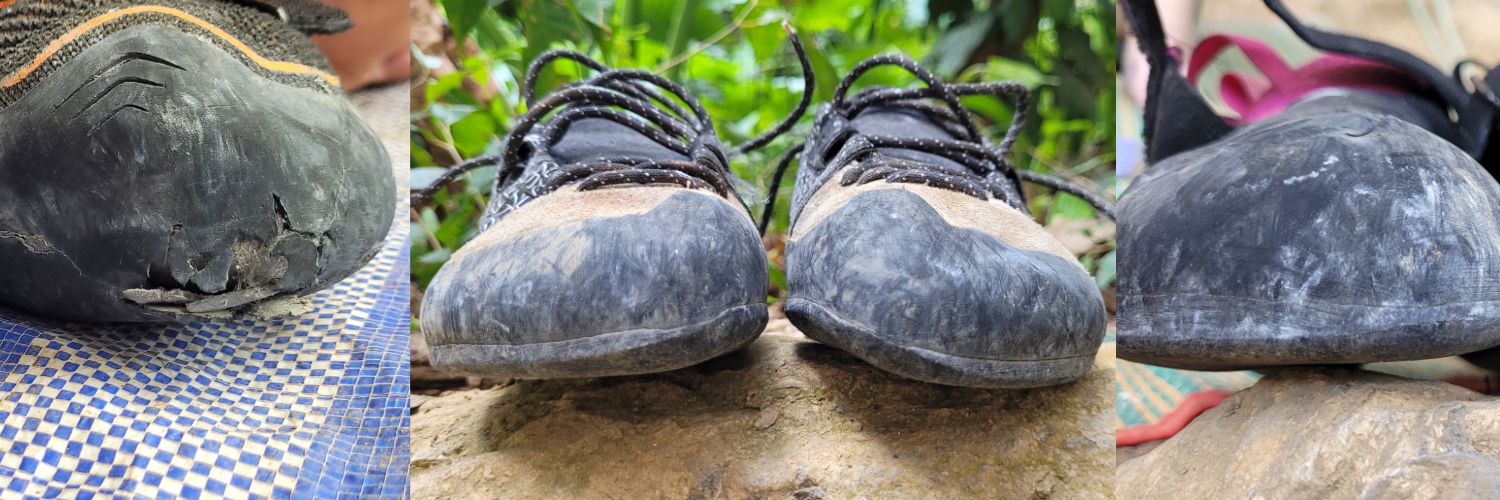
Important Note: Your climbing shoes should not be painful. Look for a stiff and comfortable pair.
Tip: use baby powder. It keeps the climbing shoe free from dirt, smell, and it makes it easier to get them on when your feet are a bit sweaty.
Although there is much more to be said about climbing shoes we hope this provides enough information to help you find better climbing shoes for outdoor climbing. For those of you coming on a Climbing Holiday in the Costa Blanca, Rock & Sun has a large collection of rental shoes there for you try out, test and compare with your own shoes before making your decision on which climbing shoes to buy next.